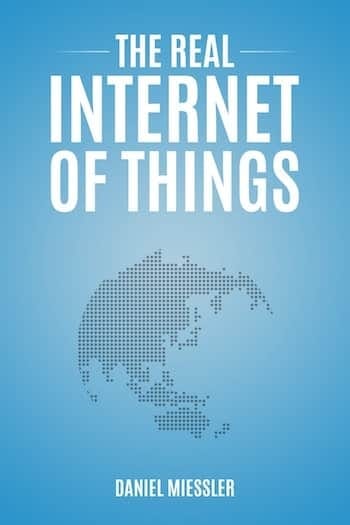We're All in Fractal Microcults
We now have an infinite number of ways to strongly disagree with someone

These are published chapters from my book The real Internet of Things, published on January 1st, 2017.
The algorithm is the centerpiece of expertise. It’s ultimately the way of doing something, and that’s what makes one offering better than another.
In the past, the core algorithm of a business has been combined with a massive number of other factors to determine success. These include things like having great employees, being in a fortuitous location, or having a given idea at a particular time. As technology connects more and more people to each other and becomes more of the interface to a business, these non-central, non-algorithmic variables will either be removed or will have diminishing effect.
As this happens, algorithm(s) will become increasingly primary to the effectiveness of any given company, and daemons will be the interface that presents that value externally.
Most software businesses will become algorithms presented to others through their business daemons. And many traditional businesses will continue to become software businesses.
Examples will include:
Finding gifts customized to the exact individual
Organizing the perfect vacation based on the four people going
Navigating all the logistics, in the best way possible, of that four-person vacation
Determining the current mood of a person or a location based on what is known about them
Finding the optimal route from one place to another, based on the values and states of mind of the various travelers
Determining the best way to charge a customer based on evolving competition, logistics, and conditions on the ground
All these tasks will be services available online, and there will be several or thousands of competitors in any particular space. There will even be services that consume and rate those services, and present their output (value) through their own daemons.
Many foundational businesses and services will still exist, moving matter from one place to another, the performing arts are an example of this. Some industries and businesses will maintain an analog component simply due to the constraints of physics, but the way they are consumed and marketed will change fundamentally.
Changing the business interaction model
One important way this will occur with software businesses, such as retail sites, is through the decoupling of business components that traditionally reside together. Software businesses started as unified experiences: you go to them for the display of the product, you stay with them as you interface with their offerings, and then you use them to pay.
These will soon be separated into discreet pieces. Companies who make things will not be experts in displaying that content to humans. Companies that are experts in UI/UX will not focus on creating content or products. It’s specialization, but at an increasingly granular level.
Get a weekly breakdown of what's happening in security and tech—and why it matters.
The biggest change, however, will be that the activity itself will be centered around the digital assistant and not with the business.
Users will ask (via voice or text) to view the wares of a business, and this experience will be broken into multiple components. In this example, Sara is working with her digital assistant named Jan.
Sarah will ask Jan to see headphones from Sequoia (a very popular service for products).
Jan will contact Sequoia’s daemon and retrieve their product list which includes list of recommended UI/UX options.
Jan notices that Sequoia recommends Ambient’s UI/UX filter within the daemon response.
Jan calls and instantiates the Ambient UI/UX interface and passes the Sequoia product content through it, and then presents that to Sarah.
Sarah navigates Sequoia’s content, using Ambient’s UI/UX, using a series of voice commands and gestures.
Sarah finally says, "This one and this one. Ship to Abdul and Micah. Make sure they’re there tomorrow."
Jan then submits a request to Sequoia’s daemon to complete the purchase.
Sequoia then submits a request to Arrival—their preferred shipping provider, which Jan allows.
The crucial point here is that Sarah spent no time interacting directly with Sequoia’s systems.
Jan acted as Sarah’s advocate in all of these interactions—retrieving what needed to be retrieved, finding the best way to display it, listening for commands to change the display, and then finally making the purchase and arranging delivery.
The function of the business changes fundamentally in this model. Instead of being in charge of the user’s entire experience, businesses become part of an algorithm marketplace used by DAs to satisfy the requests of their principals.
The DA is now the centerpiece of the user experience, and they utilize the services fabric (consisting of business daemons) to choose what will serve their principals best.
Humans make their wishes known and assistants sort out those desires and interact with the requisite services and then present options via a combination of voice, text, and AR interfaces.
Summary
Many businesses will become digital and service-oriented because many businesses can (and will) ultimately be reduced to their algorithms.
Those algorithms will be presented externally to the world as daemons (APIs).
We will interact with our DAs, and our DAs will interact with the APIs required to produce our optimal experience.